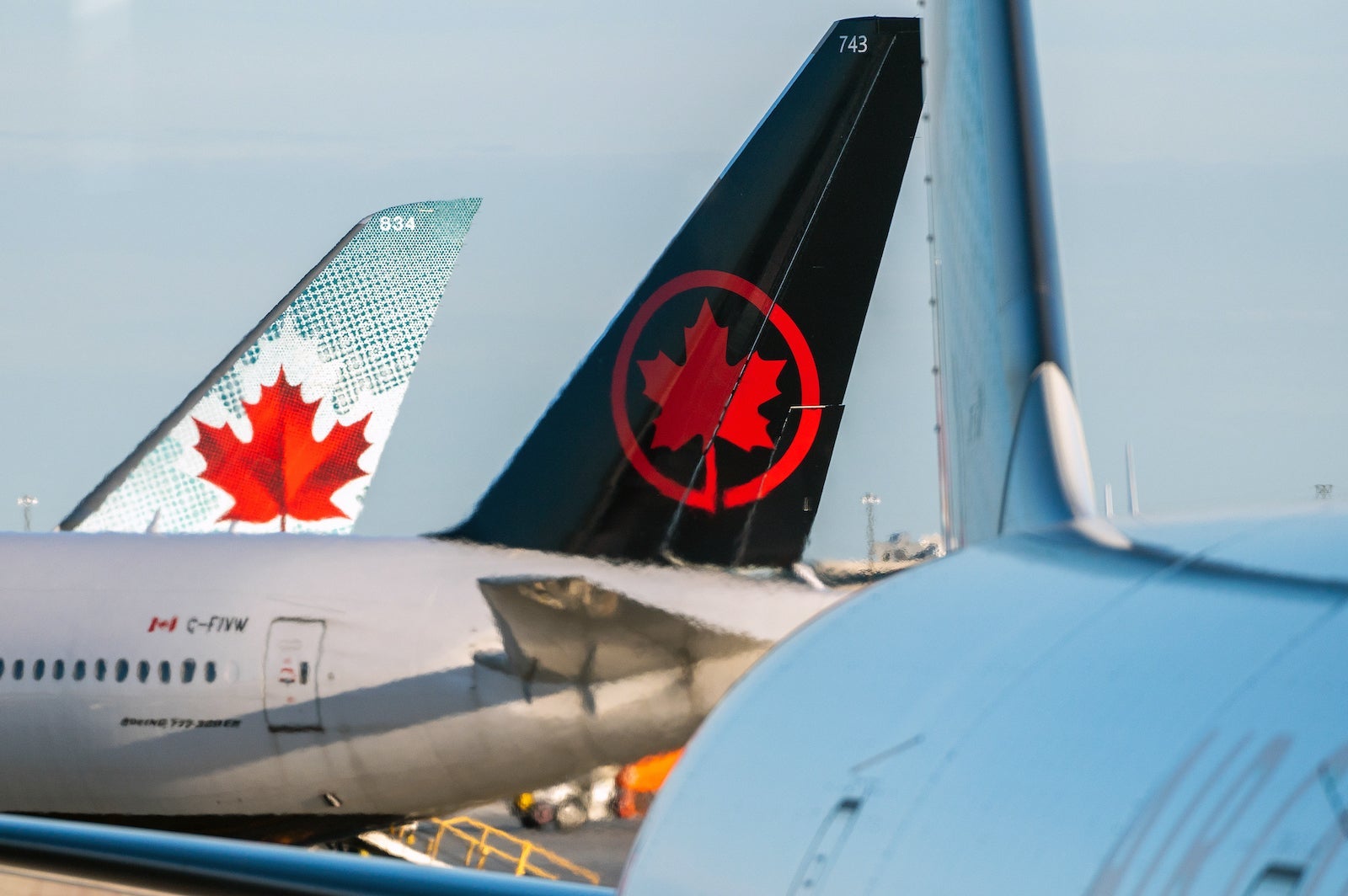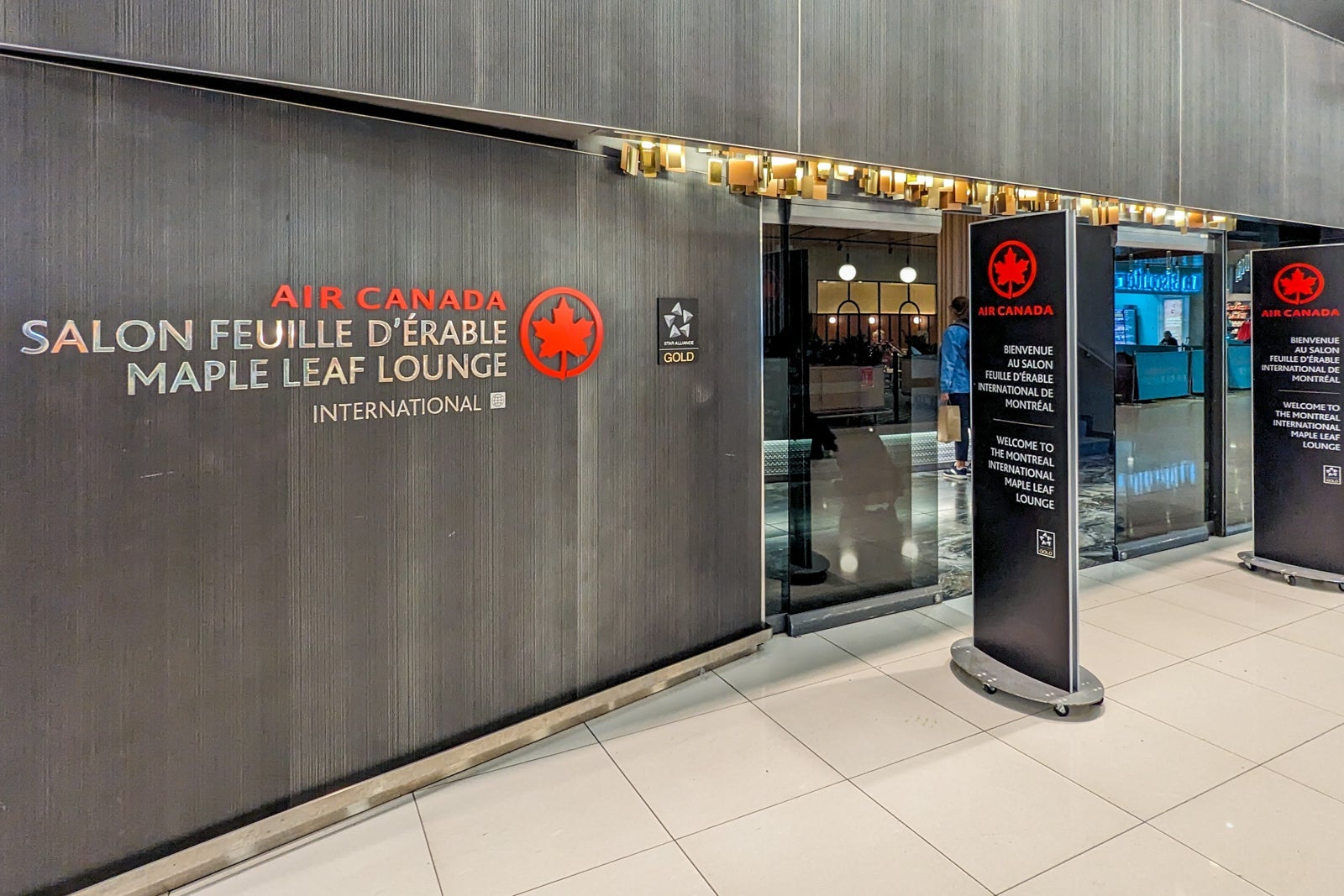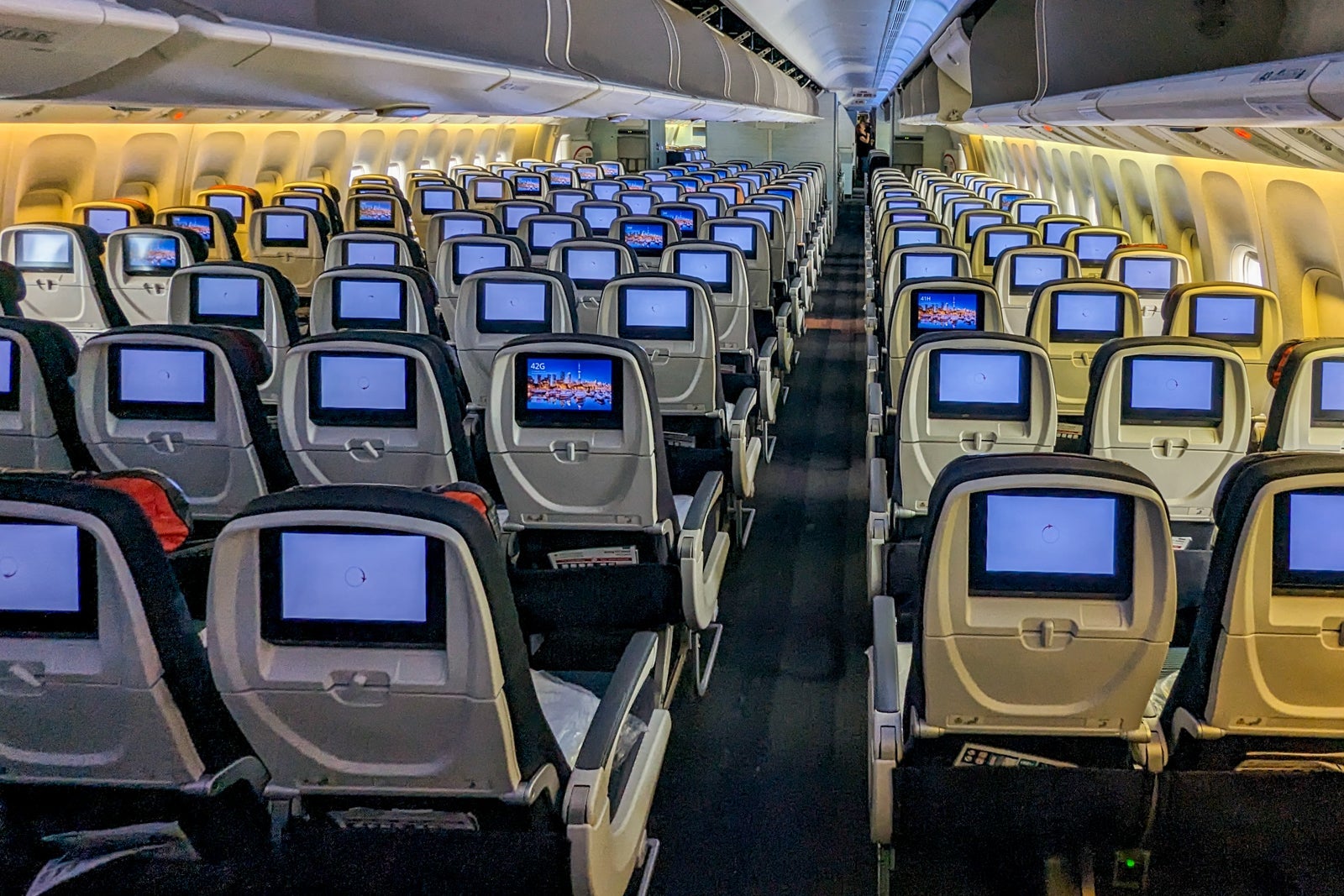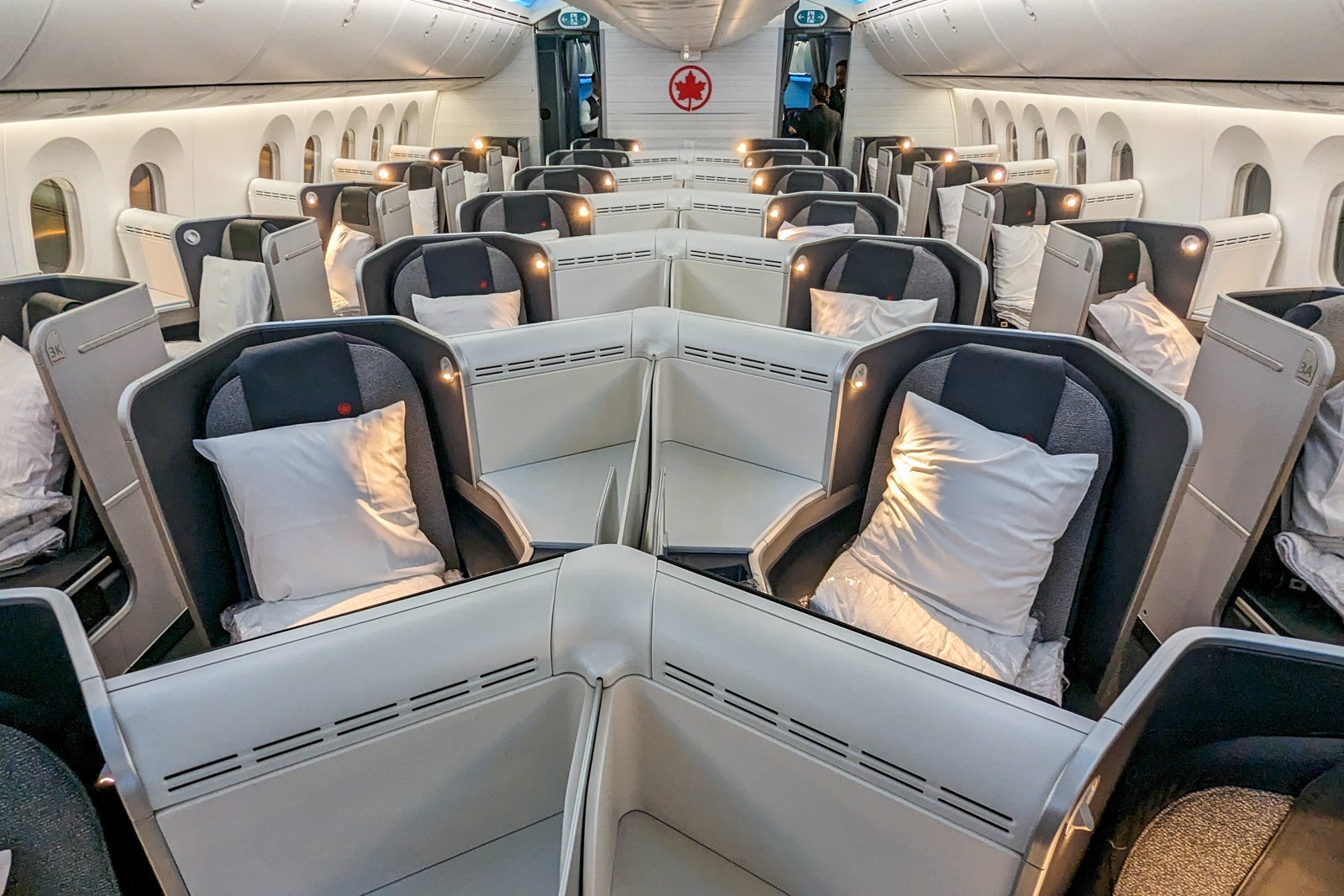Air Canada is overhauling how travelers earn points and qualify for elite status in its Aeroplan loyalty program — and for U.S.-based flyers, this change may feel familiar.
Starting Jan. 1, 2026, Aeroplan members will no longer earn elite status based on miles flown or flight segments. Instead, status will be awarded based solely on how much you spend with Air Canada and its partners via an all-new metric.
How you earn Aeroplan points will also move to a revenue-based model, rather than being based on the distance flown.
That’s a major change, but it mirrors changes we’ve seen from American Airlines and Delta Air Lines, which have already transitioned to spend-based elite status models. And since Aeroplan is part of Star Alliance, this update will be especially relevant to frequent United Airlines flyers looking to credit flights (or even switch their loyalty) to a partner program.
Here’s what’s changing — and what U.S.-based travelers need to know about how to earn and maintain status with Air Canada in the future.
Related: Why Air Canada Aeroplan has become my favorite Star Alliance loyalty program
Earn Aeroplan points based on how much you spend

From Jan. 1, 2026, Aeroplan members crediting flights operated by Air Canada (and Star Alliance and other partner-operated flights ticketed by Air Canada) will earn points based on the amount they spend, rather than the distance they fly.
Members will earn just 1 Aeroplan point per Canadian dollar (about 73 cents) spent on their base fare, including carrier-imposed surcharges but excluding airport fees and government taxes. Elite members will earn the following new multipliers:
- Aeroplan 25K members: 2 Aeroplan points per CA$1
- Aeroplan 35K members: 3 Aeroplan points per CA$1
- Aeroplan 50K members: 4 Aeroplan points per CA$1
- Aeroplan 75K members: 5 Aeroplan points per CA$1
- Aeroplan Super Elite members: 6 Aeroplan points per CA$1

Daily Newsletter
Reward your inbox with the TPG Daily newsletter
Join over 700,000 readers for breaking news, in-depth guides and exclusive deals from TPG’s experts
For example, a 75K member flying from New York’s LaGuardia Airport (LGA) to Montreal-Trudeau International Airport (YUL) in Economy Flex, with a base fare of CA$258 (about $187), from Jan. 1, 2026, would earn 1,290 Aeroplan points — 258 multiplied by five, the number of points earned per CA$1 spent — compared to just the 324 Aeroplan points a member would earn under the current distance-based program.
The more you spend on Air Canada and the higher your elite status, the more Aeroplan points you will earn.
At this time, no changes have been made to how members earn points when crediting flights operated by partner airlines (not ticketed by Air Canada) to Aeroplan or points earned through credit card spending.
Related: On board the first Lufthansa Allegris flight — was the new cabin worth the wait?
Elite status will become spend-based

Currently, Aeroplan members earn elite status using a combination of status qualifying miles, status qualifying segments and status qualifying dollars. Starting Jan. 1, 2026, these three metrics will be phased out, and a new status qualifying credits metric will be the only qualification metric.
Here’s how the status earning levels will change:
| Aeroplan elite status level | Current requirements | 2026 requirements |
|---|---|---|
| 25K | 25,000 SQMs or 25 SQSs plus $3,000 SDQs | 25,000 SQCs |
| 35K | 35,000 SQMs or 35 SQSs plus $4,000 SDQs | 35,000 SQCs |
| 50K | 50,000 SQMs or 50 SQSs plus $6,000 SDQs | 50,000 SQCs |
| 75K | 75,000 SQMs or 75 SQSs plus $9,000 SDQs | 75,000 SQCs |
| Super Elite | 100,000 SQMs or 100 SQSs plus $20,000 SDQs | 125,000 SQCs |
Aeroplan members can earn SQCs through:
- Flying Air Canada (and Star Alliance-operated flights ticketed by Air Canada) at a rate of 2 SQCs per CA$1 for Standard fares and eUpgrade add-ons and 4 SQCs per CA$1 for Flex fares and up, with no earning limits
- Booking Air Canada Vacations (1 SQC per CA$1, with no earning limits)
- Flying with Star Alliance partners (not ticketed by Air Canada) or other travel and retail partners such as Marriott, Uber, Avis and Starbucks (1 SQC per 5 points earned, up to a total partner cap of 25,000 SQCs per year)
- Spending on Canadian-issued credit cards (rate varies depending on card type), up to 25,000 SQCs per year
Like earning Aeroplan points, members will earn SQCs on base fares and carrier surcharges but not on airport fees and government taxes. Non-Star Alliance partner-operated flights will not earn any SQCs.
Basic economy fares on Air Canada do not accrue SQCs.
Aeroplan will also introduce new milestone rewards, starting at 10,000 SQCs and unlocking every 10,000 SQCs up to 200,000 SQCs, then every 20,000 SQCs after that (up to 1 million SQCs). At each milestone, members receive 10 or 20 eUpgrade credits automatically and can choose one of several additional benefits, including:
- Additional eUpgrade credits (exchanged for upgrades on Air Canada flights)
- Priority Reward vouchers (50% off points for eligible flight redemptions)
- Bonus Aeroplan points (up to 20,000 points at higher thresholds)
- Maple Leaf lounge passes
- Discounts on hotel, car rental, gift card or merchandise redemptions
- Gifting Aeroplan elite status to a friend
- Air Canada gift cards
Related: A review of Air Canada business class on the Boeing 787 Dreamliner from Montreal to London
Earning Aeroplan elite status from credit card spending

Even under the new spend-based model, U.S. travelers can still earn or accelerate their Aeroplan elite status through credit card spending. For those who hold the Aeroplan® Credit Card (see rates and fees), there are no changes being made to being awarded 25K status after spending $15,000 on the card annually.
From Jan. 1, 2026, cardholders will receive a 5,000-SQC head start; additionally, the Level Up benefit will be replaced with new SQC awards. (Note that Level Ups earned in 2025 will be honored.)
The new SQC system will award:
- 10,000 additional SQCs when cardholders spend $25,000 in a calendar year
- 10,000 additional SQCs when cardholders spend $50,000 in a calendar year
- 35K status when cardholders spend $75,000 in a calendar year
- One Priority Reward each when cardholders reach spending thresholds of $100,000, $250,000, $500,000, $750,000 and $1 million
- Global Elite status plus one Priority Reward after spending $1 million
Related: 9 incredible benefits of the Air Canada Aeroplan credit card
What the changes mean for US-based Aeroplan elite members

The new system for earning points may not have a positive impact on nonelite members, which is disappointing. To compare, United’s MileagePlus program, a fellow Star Alliance airline, offers an impressive 5 miles per U.S. dollar spent for base members, which is much better than Aeroplan’s new 1 point per CA$1 (about 1.35 cents per dollar spent).
For example, on a CA$650 (about $472) round-trip economy-class flight to Europe on Air Canada, which includes $150 in taxes and fees, a base Aeroplan member would earn a measly 500 Aeroplan points.
If you currently hold Aeroplan elite status through flying frequently or crediting partner flights under the existing model, this shift to a revenue-based qualification system may affect how you maintain that status going forward, especially if you’re not regularly purchasing premium fares.
For a U.S.‑based traveler who mostly flies domestic or transborder on United or Air Canada, qualifying for entry‑level elite status is generally easier with United MileagePlus than with the 2026 spend‑based Air Canada Aeroplan program — unless you are prepared to run most of your airfare (or significant credit card spend) through Air Canada‑issued tickets or the Aeroplan Credit Card.
Compared with the new Aeroplan program, United’s top-tier Premier 1K elite status level remains the more attainable top‑tier status for the average U.S. traveler whose day‑to‑day flying is on United metal or United‑ticketed partners. Aeroplan’s top-tier Super Elite status in 2026 can be cheaper on paper, but only if a significant share of your annual spend flows through Air Canada‑marketed Flex or premium fares. Otherwise, the 125,000-SQC target and the 25,000 SQCs partner cap on SQCs earned from partner travel make it a steeper climb.
Related: United Premier status: What it is and how to earn it
Bottom line
Air Canada’s move to spend-based elite status and a spend-based points earning structure joins the trend of several major U.S. carriers, and for big spenders who currently hold (or are chasing) elite status, this could be good news. While mileage runners may find the new structure less rewarding, the ability to qualify for status via spend alone simplifies the process. However, the new Aeroplan points earning rates are disappointingly low.
Though the changes are mixed, Aeroplan remains a terrific program for redeeming points and miles, especially given how easy it is to transfer credit card points and miles to Aeroplan.
Related reading:


